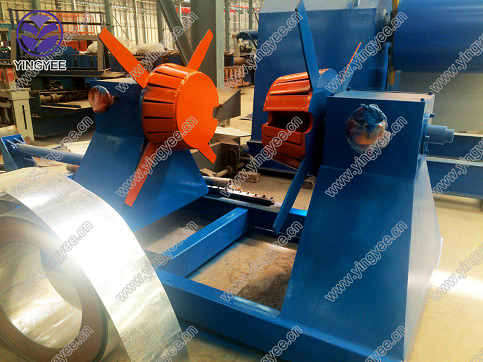
The Importance of Automated C Channel and Wall Angle Making Machines in Modern Construction
In the rapidly evolving construction industry, efficiency and precision are paramount. The introduction of automated machines for producing C channels and wall angles has revolutionized the way construction materials are manufactured. These machines streamline the production process, enhance accuracy, and significantly reduce labor costs, making them indispensable tools for modern builders.
Understanding C Channels and Wall Angles
C channels and wall angles are vital components in structural framing. C channels, typically used in the support of walls, roofs, and floors, provide reinforcement and stability. Meanwhile, wall angles play a crucial role in the installation of drywall, ensuring that edges are properly aligned and finished for aesthetic appeal. The high demand for these materials in commercial and residential construction has necessitated the emergence of efficient manufacturing solutions.
The Advantages of Automated Machinery
1. Enhanced Efficiency Automated C channel and wall angle making machines can operate continuously, producing large quantities of materials in a fraction of the time it would take manual labor. This high level of efficiency not only speeds up production timelines but also enables contractors to take on more projects simultaneously, ultimately increasing profitability.
2. Improved Precision Modern machines utilize advanced technology, such as computer numerical control (CNC), to guarantee exact specifications. This precision minimizes waste and reduces the need for rework, a common pitfall in manual manufacturing. When every piece is made to specification, it leads to a higher quality of construction and a better overall product.

3. Cost-Effectiveness While the initial investment in automated machines can be significant, the long-term savings are substantial. Reduced labor costs, minimized material waste, and the ability to produce at scale contribute to lower operational costs. As construction companies strive to maintain competitive pricing, these machines become a strategic asset.
Technology Integration
The integration of smart technology is another transformative aspect of automated machines. Production lines equipped with sensors and data analytics allow manufacturers to monitor operations in real-time. This capability ensures that any issues can be quickly addressed, reducing downtime and further enhancing productivity. Moreover, automation allows for easy scalability; businesses can adjust production levels based on demand without the upheaval associated with hiring and training additional workers.
Environmental Impact
The environmental footprint of construction processes is a growing concern. Automated production methods inherently lead to less material waste compared to traditional techniques. The ability to recycle scraps into the manufacturing process further reduces the environmental impact, aligning with the industry's shift towards sustainability.
Conclusion
As the construction industry continues to evolve, the significance of automated C channel and wall angle making machines cannot be overstated. Their ability to deliver efficiency, precision, and cost-effectiveness positions them as essential tools for modern construction businesses. As more contractors recognize the benefits of automation, we can expect to see a broader adoption of these technologies, further advancing the industry's capabilities. In this competitive market, embracing innovation is not just an option—it’s a necessity for success in an ever-changing landscape.